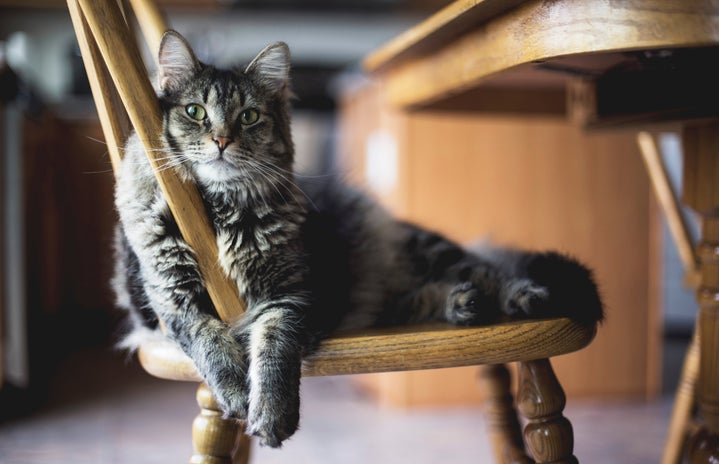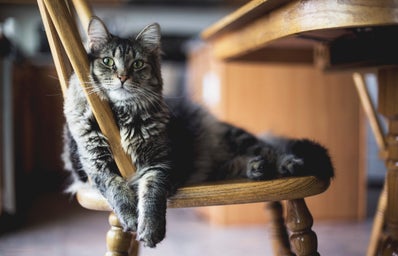As a huge animal lover, and a person diagnosed with clinical depression and anxiety, finding a stray, malnourished tortoiseshell cat was one of the best things to ever happen to me. I found my cat Bunny abandoned in the middle of the road shot by a pellet. I remember taking her home, then to the vet, and then waiting to see if she could live with the injury. Amazingly she did. Bunny went from an emaciated four pounds to a healthy, round, and fluffy ten pound cat with a knack for playing fetch. I lost Bunny in a car accident this year on November 10th, I will never forget the way her fur felt or the way our souls connected. She was my best friend in my days of isolation and darkness and continues to inspire me through our memories together. In honor of her memory I compiled a list of fascinating feline facts to try to give a preview into the amazing world of cats.
Healing powers
The frequency of cat purring has been shown to fall between 25 and 140 Hz. The same frequency has been shown to aid in the healing of broken bones, joint and tendon repair, and wound healing.
Meow HIjacking emotional response
According to recent scientific research by University of Oxford Professor Morten Kringelbach the results of his studies of hedonia (pleasure) led to the discovery of an instinctual subconscious emotional response in the orbitofrontal cortex that can be triggered by both a baby’s crying and a cat’s meow. The study suggested that there are striking similarities in the way our brains process a cat’s meowing and that of a baby crying. The fact that a newborn’s cry and a cat’s meow initiated the same emotional response could have been a coincidence except for the fact that cats developed meowing to communicate with humans, not other cats. When cats meow to us it’s as if they are hijacking our emotional responses to make us love and care for them; they probably don’t mean to manipulate us but they do. It’s more likely that they do it because they know it works rather than having a secret underground cat society scheming how to manipulate the human race, but I prefer the latter.
Felis Silvestris lybica
The North African wildcat, or Felis silvestris lybica, is the common ancestor of all presently domestic cats. We know this because of the 2007 work of geneticist Carlos Driscoll. Additionally, in the small Mediterranean island Cyprus, archeologists in 2004 found evidence of the earliest known interaction between cat and human. During the excavation of the site they found a grave with two occupants, the skeletal remains of a man and a cat (a Felis silvestris lybica). The way the bones were laid out suggested that the cat had been intentionally placed there, both of the skeletons facing each other in death.
cat sailors
Since rats were really common on cargo boats, cats were more than welcome aboard. But their usefulness didn’t stop at hunting rodents, protecting food and the crew from bites. In many early seafaring societies, like the Vikings, having a cat on board a ship was good luck. Their keen senses and sensitive whiskers also give them the uncanny ability to predict the weather. There are many famous seafaring felines and my favorite has to be Unsinkable Sam, previously named Oscar, who survived two shipwrecks. After his second near-death experience, Unsinkable Sam was given a new job as mouser-in-residence at the governor general of Gibraltar’s office. He eventually returned to the U.K. and lived out his years at the Home for Sailors.


